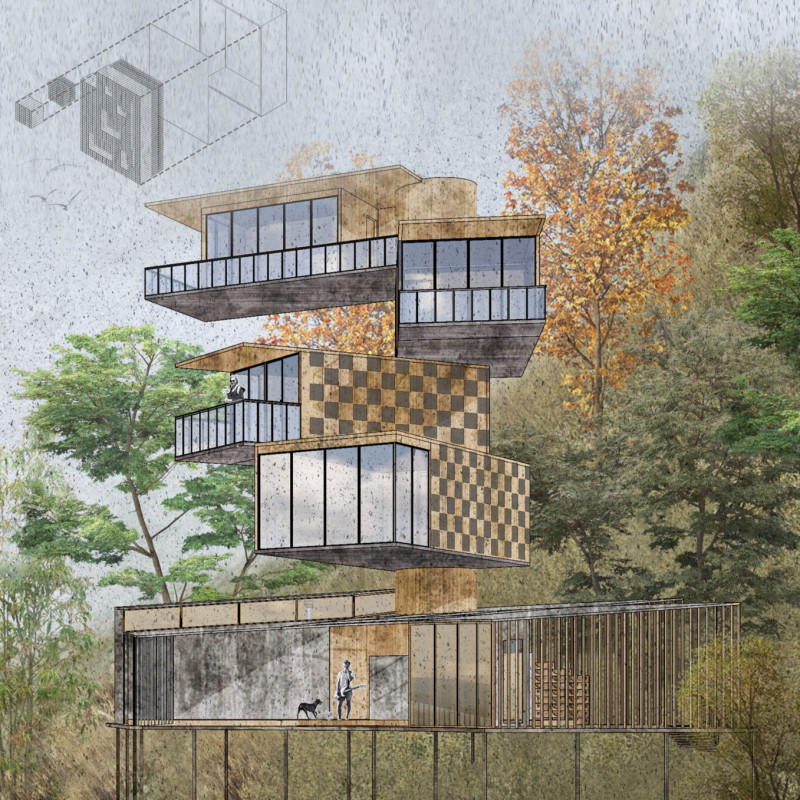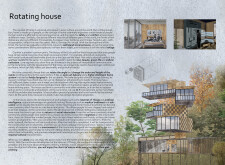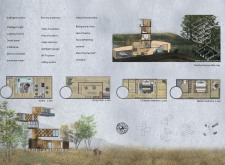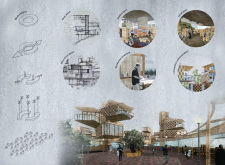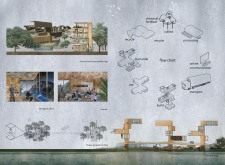5 key facts about this project
At the core of the project is the idea of rotation, which is reflected in the design's ability to transform itself. The architecture enables different areas of the house to be utilized for various purposes, showcasing a modular approach to home design. This concept is increasingly relevant in today’s context, where individuals often seek versatility in their living spaces. The architecture supports not just the physical presence of walls and rooms but fosters meaningful interactions among family members and the larger community.
The key function of the Rotating House is to adapt to the diverse activities of everyday life. Each area within the home serves a distinct purpose while remaining interconnected. The living room promotes social engagement, serving as a gathering place for family and friends. The studio space allows for creative pursuits or remote work, reflecting the increasing need for multifunctional areas in residential architecture. Bedrooms are designed with comfort and privacy in mind, thoughtfully accommodating the needs of the inhabitants, particularly in the children's rooms that emphasize safety and creativity.
A direct relationship with the exterior environment is a hallmark of this design. Large windows are strategically placed to maximize natural light and create visual connections with the outdoors. The use of materials such as wood, glass, concrete, and metal not only contributes to the aesthetic appeal of the house but also reflects a commitment to sustainability and environmental consciousness. These materials are selected to enhance energy efficiency and reduce ecological impact, aligning with contemporary architectural trends focused on sustainability.
What sets the Rotating House apart is its unique blend of technology and design. The integration of smart home systems ensures that residents can manage their environment comfortably and efficiently. Features such as automated lighting, climate control, and security systems contribute to a seamless living experience. Environmental controls, including water recycling systems and potential solar energy utilization, further demonstrate the project’s dedication to ecological responsibility.
Moreover, the architectural design places a strong emphasis on community engagement. The layout encourages connectivity among residents, with shared common areas that promote interaction and collective living. This approach reflects a growing trend in architecture that values communal experiences, often lacking in modern urban developments. The Rotating House aims to foster a sense of belonging, bridging individual living experiences with the broader community.
Unique design approaches are evident throughout the project, notably in its modular and flexible spaces. The ability to adjust layouts and functional zones means that the house can evolve with the changing needs of its occupants over time. This flexibility not only benefits the residents but also contributes to a more sustainable use of resources, aligning with broader architectural ideas of resilience and adaptability.
The architectural plans and sections associated with the Rotating House further illustrate the carefully considered intricacies of this project. By examining these designs, one can gain deeper insights into the architectural intent and its manifestation in physical space. The design outcome is not just a house, but a well-thought-out living environment that prioritizes the interplay between personal comfort and social connectivity.
For those interested in understanding the full scope of the architectural designs and ideas behind the Rotating House, it is encouraged to explore the project presentation in detail. This exploration will provide a comprehensive view of the transformative potential that modern architecture holds in addressing the needs of today’s residents.


